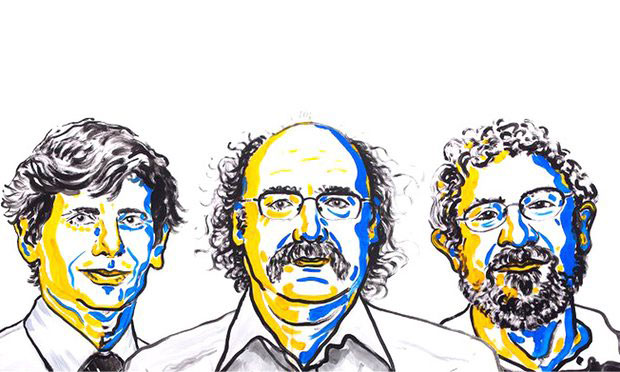Stockholm, Sweden- Three British scientists are the winners of the Nobel Prize in Physics after discovering unusual states of matter. David Thouless, Duncan Haldane, and Michael Kosterlitz proved superconductivity in two-dimensional materials and the finding resulted in improved materials for electronics, quantum computers, and other technologies.
The Royal Swedish Academy of Sciences announced the awarded Tuesday saying their work have brought light to the complex understanding of matter’s mysteries. They won for “theoretical discoveries of topological phase transitions and topological phases of matter.”

The three scientists have created a new perspective when it came to materials and transformed how the world will study them in the future.
Their research was done between the 1970s and 1980s, and it passed the test of time. The theory was proven back then, and it continues to be valid nowadays, making Thouless, Haldane and Kosterlitz work a real discovery.
David Thouless is now 83 years old and works at the University of Washington in Seattle as professor emeritus. He was born in Bearsden in Scotland and was awarded half of the 8 million kronor ($930,000.)
The other half of the prize will be split between Duncan Haldane, 65, born in London and currently working as a physics professor at Princeton University, and Michael Kosterlitz, 74. He was born in Aberdeen and works at Brown University in Rhode Island.
The Nobel-winning discovery and its relevance to the world
The Nobel laureates studied extremely thin materials, even those that happened to be two-dimensional or even one, despite the skepticism of finding unusual anatomic-scale behavior in those settings.
The trio based their research on topology, a mathematical branch that describes objects depending on the number of “holes” they have. Topology studies properties that do not change when objects are distorted.
To better understand the concept, Thors Hans Hansson, a member of the Nobel physics committee, explained the theory using a bagel, a pretzel, and a cinnamon bun. Hansson said that even when the foods were different in many ways, topologists only considered the holes in the bagel, one, the pretzel, two, and the cinnamon bun, one, to say those three materials are different.
The study not only differentiates matter from a topological view, but it also discovered exotic states of matter, which are unexpected electrical properties in various materials. Thouless, Haldane, and Kosterlitz found superconductivity when experimenting with two and one-dimensional materials. Superconductivity is the sudden ability of electrons to go through matter without any resistance.
The electrical resistance varied in response to the magnetic field. If the magnetic field suffered a subtle change, the resistance changed considerably in defined steps. And now, the effect discovered between the 1970s and 1980s is so precise that scientists had to represent the electrical resistance, and now it is measured in “ohm.”
Nobel committee member David Haviland made it clear that this year’s prize was more about theoretical discoveries, although the winning research is now being applied in different fields. Haviland said the the British trio came up with a description of certain materials by using topological ideas “which have proven very fruitful and has led to a lot of ongoing research about material properties.”
The effort of the laureates was applauded because even when the topology is an abstract branch of mathematics and it is not very used, Thouless, Haldane, and Kosterlitz managed to explain exotic states of the matter that were never discovered before.
Kosterlitz said that he was in his 20s when he started their work with matter and emphasized that his “completely ignorance” was an advantage to explore topology and how to apply it to physics. He did not have any preconceived ideas and was able to open his mind to other sciences to explain some matter phenomena.
Haldane said in a news conference in Stockholm -via a phone link- that none of them were looking for exotic states of matter, but they “stumbled” onto the discoveries, as most of the discoveries are found. “At least in theoretical things, you never set out to discover something new. You stumble on it and you have the luck to recognize what you’ve found is something very interesting.”
The Nobel Prize and why scientists are awarded so many years after their discoveries
Nobel judges need to make sure that the awarded study has proven valid over a relevant period of time. Theoretical innovations often change their results over time or later on a mistake or a misinterpretation of the data is pointed out by other scientists and experts.
The award ceremony to celebrate the winners of the Nobel Prize will be held in Stockholm December 10, 2016, the anniversary of prize founder Alfred Nobel’s death in 1896.
This year laureate announcements started Monday with the medicine award to Japanese biologist Yoshinori Ohsumi for his work on autophagy. Autophagy is the process by which cells break down and recycle their content.
The chemistry prize will be announced Wednesday, and on Friday, the Academy will reveal who will be honored with the Nobel Peace Prize. Next week, the economics and literature Nobel winners will be announced.
Source: The Guardian
